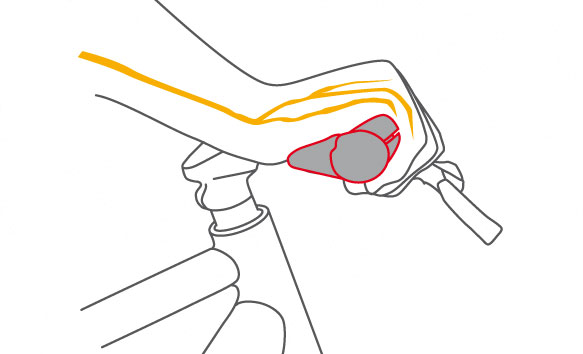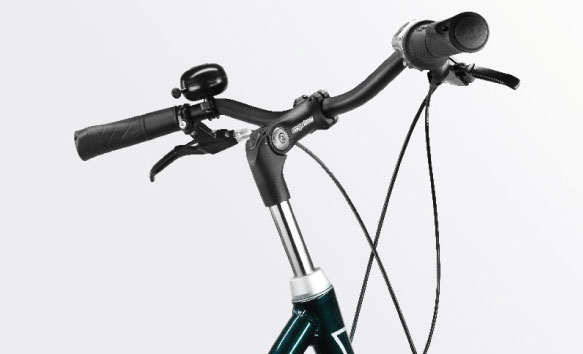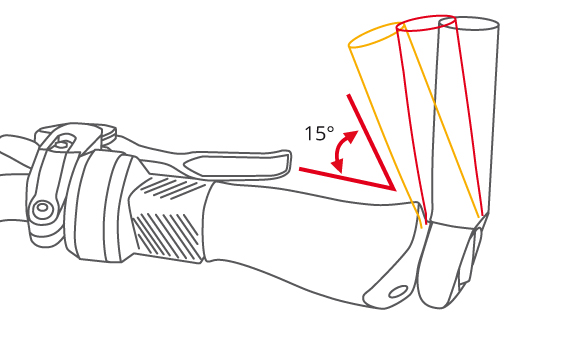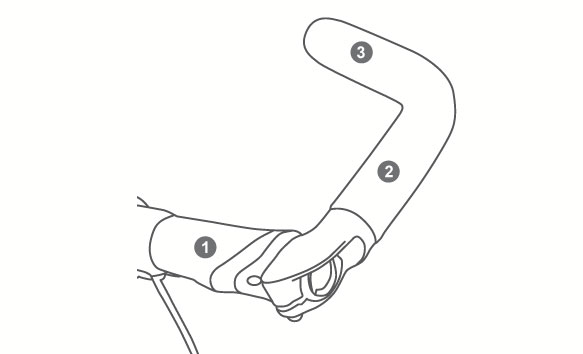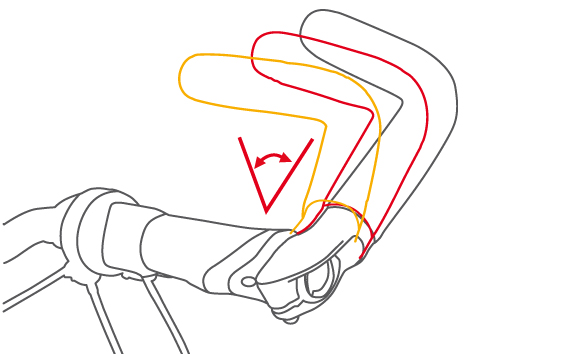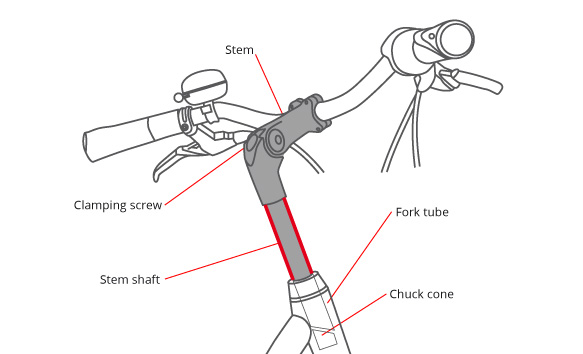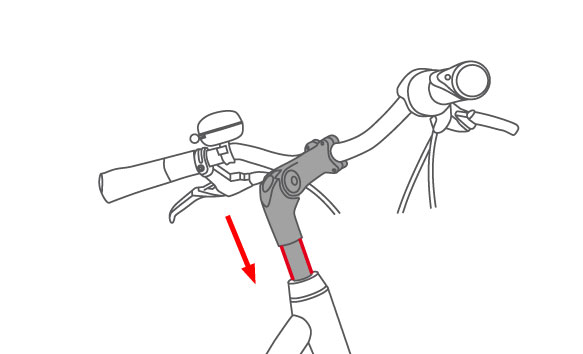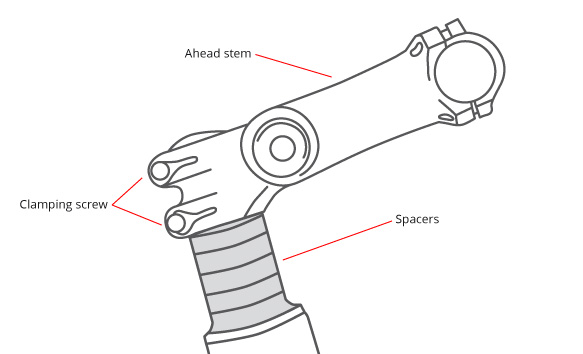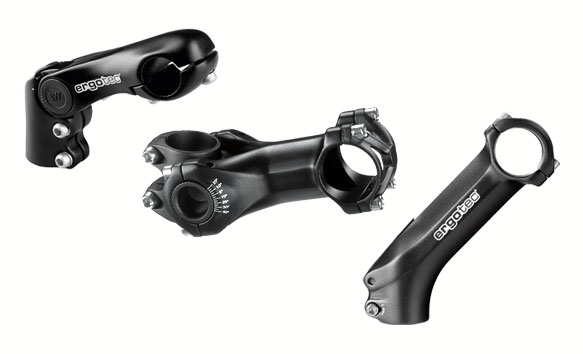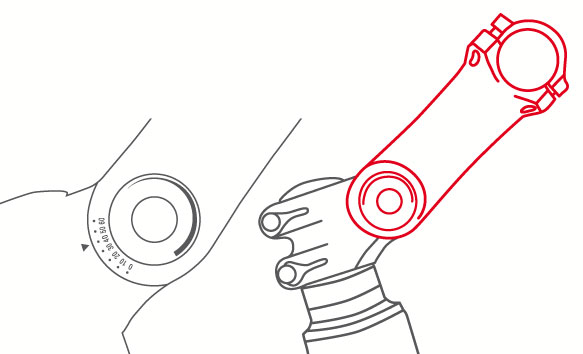Slide 1
If the bike has a stem with adjustable angle, then the position of the handlebars can be precisely “fine-tuned”.
Angle adjustment is possible in both ahead stems and quill stems.
Slide 2
To adjust the angle: loosen the bolts. Set to the desired angle. Retighten the bolts.
There are also quick release solutions from ergotec that do not require any tools.
Slide 3
With an angle setting of 60 degrees the handlebar is significantly further back and higher, the upper body is more upright.
With an angle setting of 0 degrees the handlebar is significantly further forward and lower, the upper body is more bent.
The figure shows an example of an angle setting of 40 degrees.
Slide 4
Attention! If the angle is adjusted, two factors also change: the height of the handlebars and the distance of the handlebars to the saddle.
That's why: first set the handlebar height via the shaft length. And then "fine-tune" by adjusting the angle
Slide 5
ergotec selection: adjustable stems are available for ahead constructions or classic constructions for all bicycle types, in black, silver, white.
Ask your bicycle dealer.









